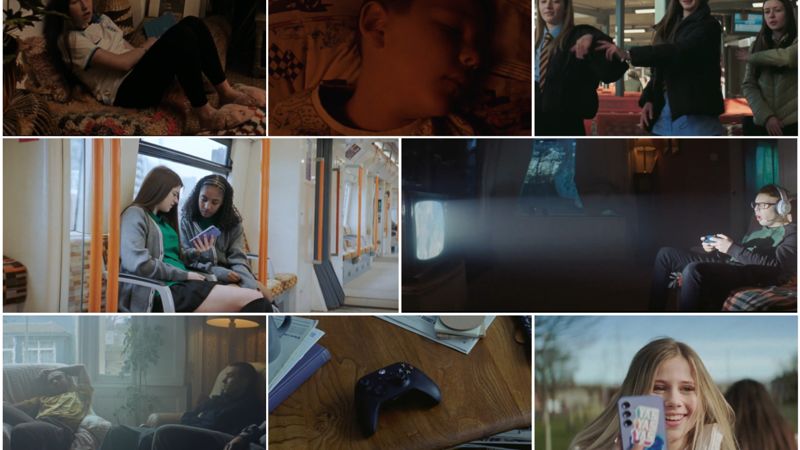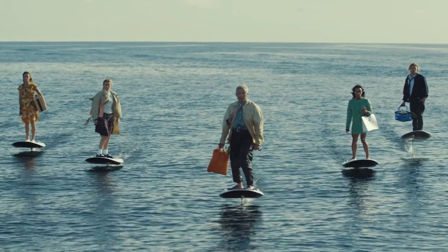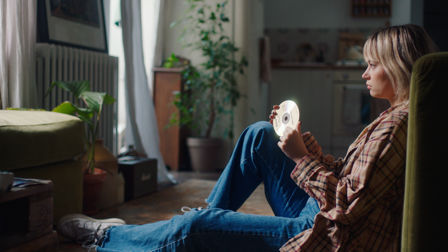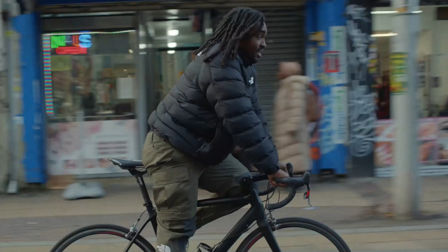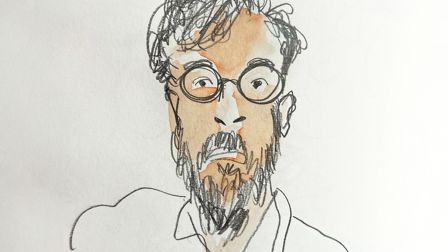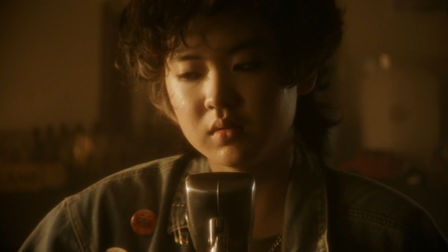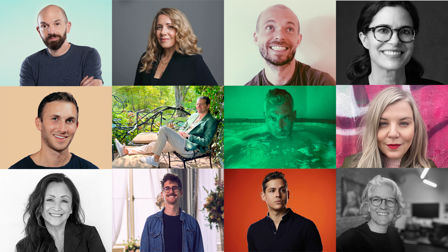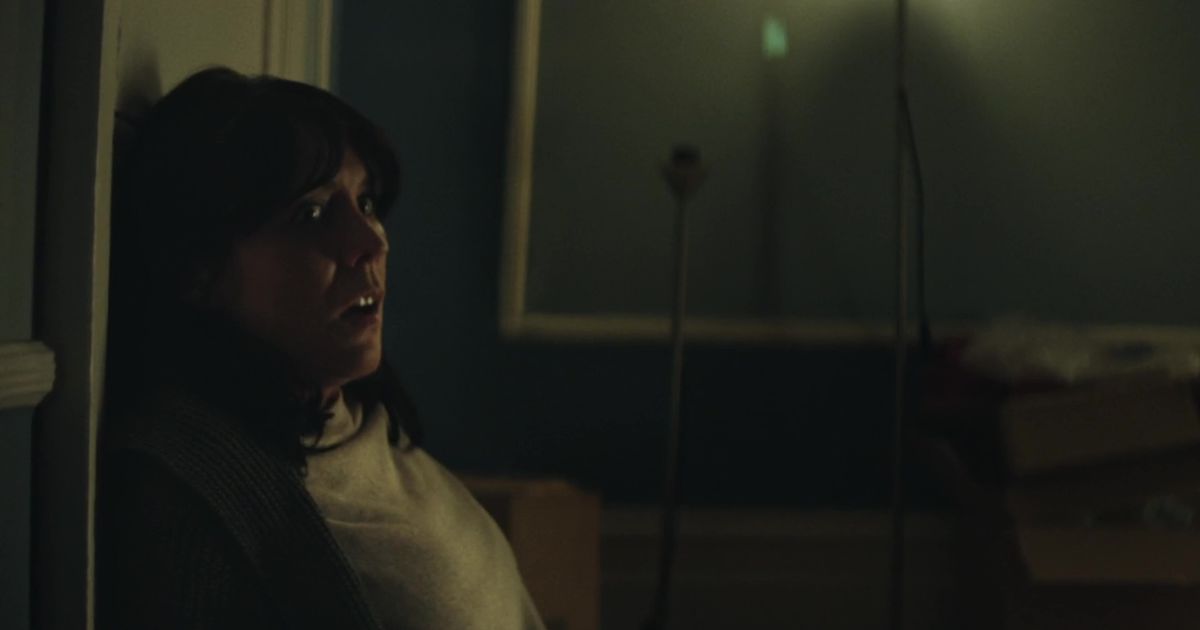It doesn’t take a long time to get scared. BOO! See, got ya. However, to construct a scenario where frights and jeopardy are enhanced by audience empathy and stakes in the characters’ well-being is a bigger challenge.
Tougher too is to do it in two minutes. With very little budget. Just for fun. And succeed.
Nobody seemed to tell this to Rob Savage, whose horror short, Salt, contains all of the thrills and spills of a slick Hollywood scarefest in less time than it takes to brew a decent cup of tea. Working with collaborator Jed Shepherd (the pair’s last short, Dawn Of The Deaf, playing ALL of the festivals), Savage had a singular ambition - create a tense and thrilling slice of demonic action that skimped at nothing bar duration. Assembling a top crew - Sam Heasman’s cinematography and the VFX of Absolute Post being standout - and enticing the talents of Alice Lowe, the team achieved their vision with aplomb.
Since picking up plaudits at Hollyshorts, Canneseries and LA Shortsfest, not to mention screenings at London Film Festival and Fantastic Fest amongst others, the film is finally online in time for Halloween scares.
We crept up on Savage and frightened him with a handful of questions regarding the proposition, the shoot and just how you give someone the willies in a matter of seconds.
Credits
powered by
- 3D, VFX and Grade Absolute Post
- Assistant Director Lina Remeikaite
- Assistant Director Stuart Jones
- Assistant Director Pedro Rino
- Producer Douglas Cox
- Production Designer Julia Grudnowska
- Production Manager Irene Marco
- Production Manager Alice Rosso
- Editor Rob Savage
- Producer Sally Heath
- 2D Assistant Arion Mehmeti
- 3D Artist James Coore
- 3D Artist Aaron Masih
- Special Effects Artist Dan Martin
- Colorist Adam Clarke
- DP Sam Heasman
- Sound Designer Calum Sample
- Sound Designer Michael Chubb
- Talent Alice Lowe
- Talent James Swanton
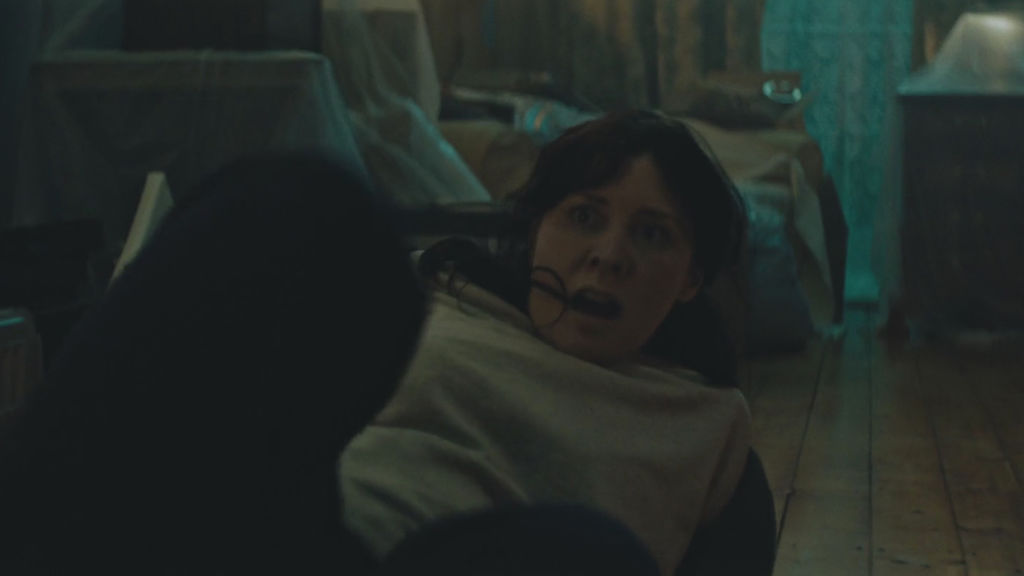
Credits
powered by
- 3D, VFX and Grade Absolute Post
- Assistant Director Lina Remeikaite
- Assistant Director Stuart Jones
- Assistant Director Pedro Rino
- Producer Douglas Cox
- Production Designer Julia Grudnowska
- Production Manager Irene Marco
- Production Manager Alice Rosso
- Editor Rob Savage
- Producer Sally Heath
- 2D Assistant Arion Mehmeti
- 3D Artist James Coore
- 3D Artist Aaron Masih
- Special Effects Artist Dan Martin
- Colorist Adam Clarke
- DP Sam Heasman
- Sound Designer Calum Sample
- Sound Designer Michael Chubb
- Talent Alice Lowe
- Talent James Swanton
Where did the concept for the short come from? Is this something you’ve been dreaming up for a while?
Writer Jed Shepherd and I are obsessive horror fans and always try and push ourselves to do things that we feel haven’t been seen before in the genre, or haven’t been done in a certain way. Our last film Dawn of the Deaf was a zombie movie told entirely in sigh language and became a big festival hit, so we wanted to find a way to push ourselves beyond what we’d done in that film.
We decided that ... we wanted Salt to be a single set piece that was so packed with ideas and scares that the audience forgets to hold their breath.
We were in Sundance with the film and me and Jed were pitching each other ideas. We both love siege movies and were trying to think of the most intense, contained siege movie we could make… and somewhere along the way, the idea of a siege movie inside a Salt Circle came up and we thought that was really cool. From there we just kept throwing ideas and images at each other until we had a rough story.
We’re a huge fan of Atomic Monster and the intense, glossy horror films of James Wan, and we saw Salt as a compressed version of one of his rollercoaster horror movies. With that in mind, we decided that whereas Dawn of the Deaf was a slow-burn horror, we wanted Salt to be a single set piece that was so packed with ideas and scares that the audience forgets to hold their breath.
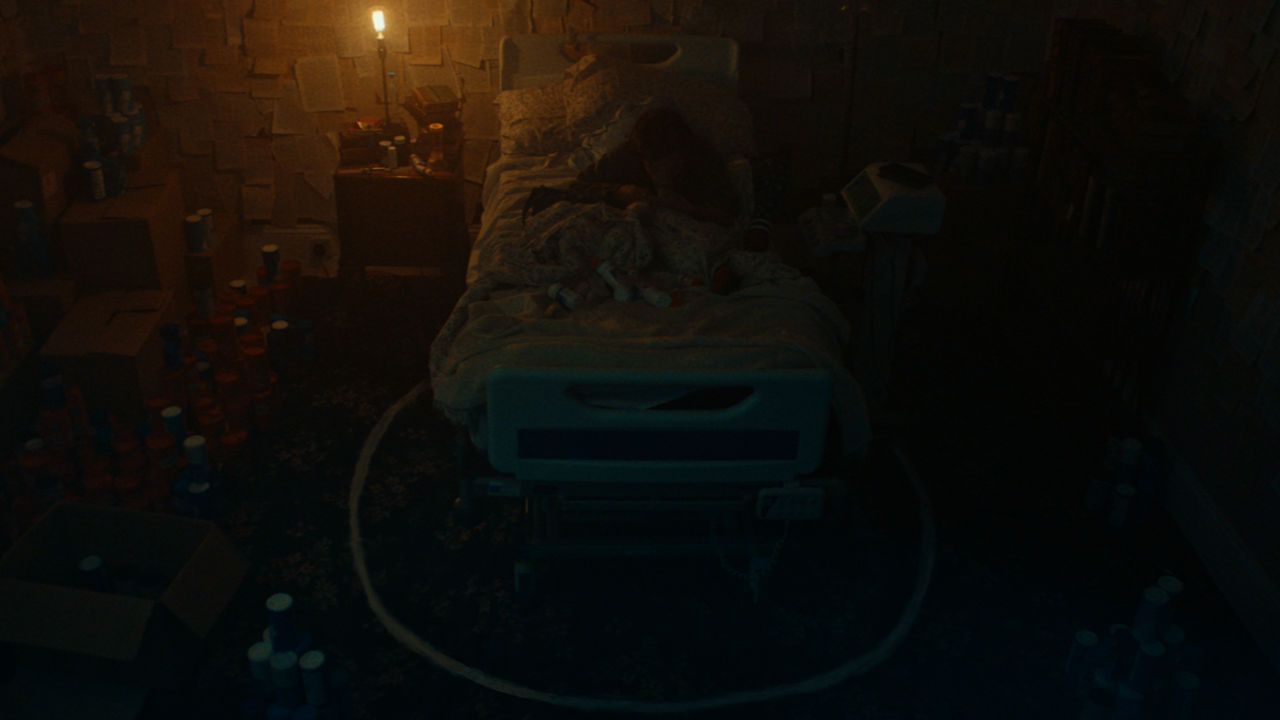
The film clocks in at a very tidy (or should we say tiny) 2 minutes in duration. Was the concept to always do a micro-short? Why so tight?
I tend to like movies that ask the audience to keep up and don’t give them all the set up they’re expecting up front – instead I like to drop an audience into a scenario as late as possible and leave them with their imaginations fired up. Audiences, especially Horror audiences, are very smart and perceptive - they take in information in an incredibly fast amount of time, based off visual cues.
We tried to set up the rules of the world, as well as the plight of the characters, within the first few shots.
We tried to set up the rules of the world, as well as the plight of the characters, within the first few shots - the piles of salt packets, the medical equipment, the bible pages and crucifixes on the walls… from the very first shot, people understand the desperate situation of the characters. It was a real lesson in stripping back and being clear and decisive in what you chose to show an audience - I’ve definitely taken this discipline on to other projects afterwards.
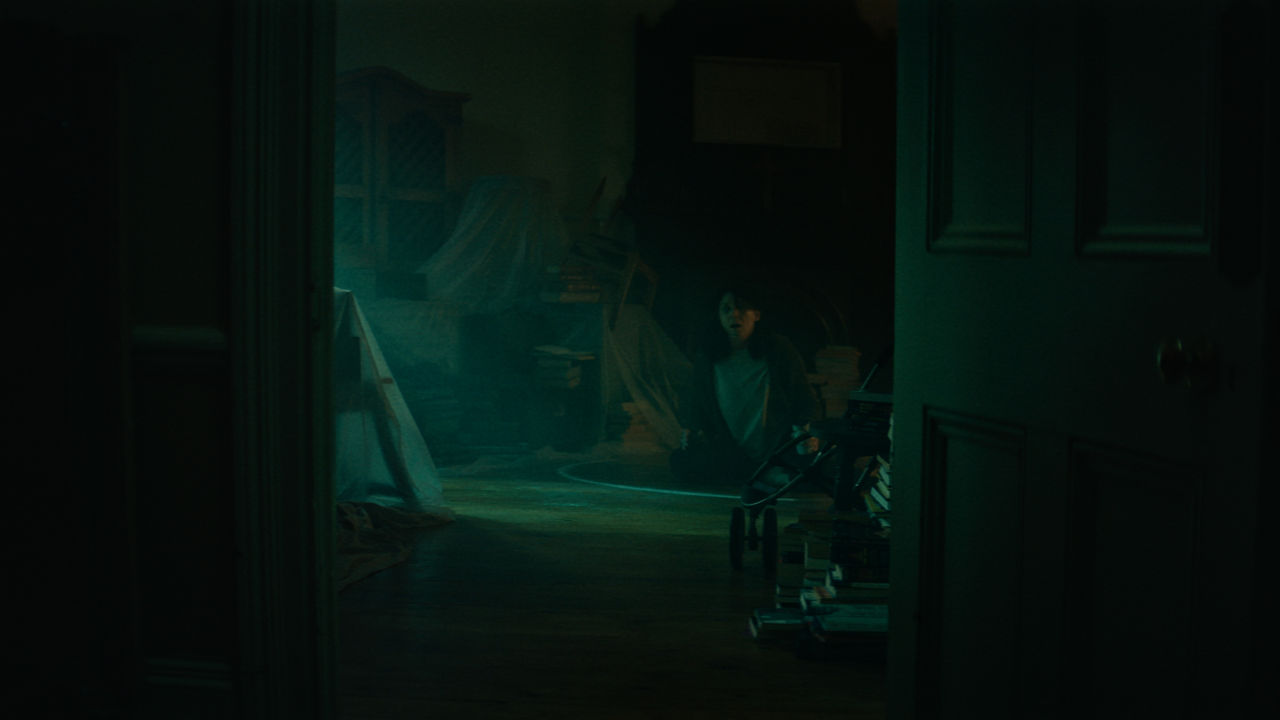
What were your inspirations for the film? We know you’re a horror connoisseur - were there any flicks in particular you were trying to evoke?
Yeah, we love big, glossy, fun studio horror movies - films like The Conjuring, or IT - so this was our attempt at making a very compressed version of those sorts of big screen blockbuster horrors.
The film is loaded with references to other films.
The film is also loaded with references to other films. Jed had a hand in decorating the sets, and worked in a number of obscure nods to classic horror movies.
See if you can spot them!
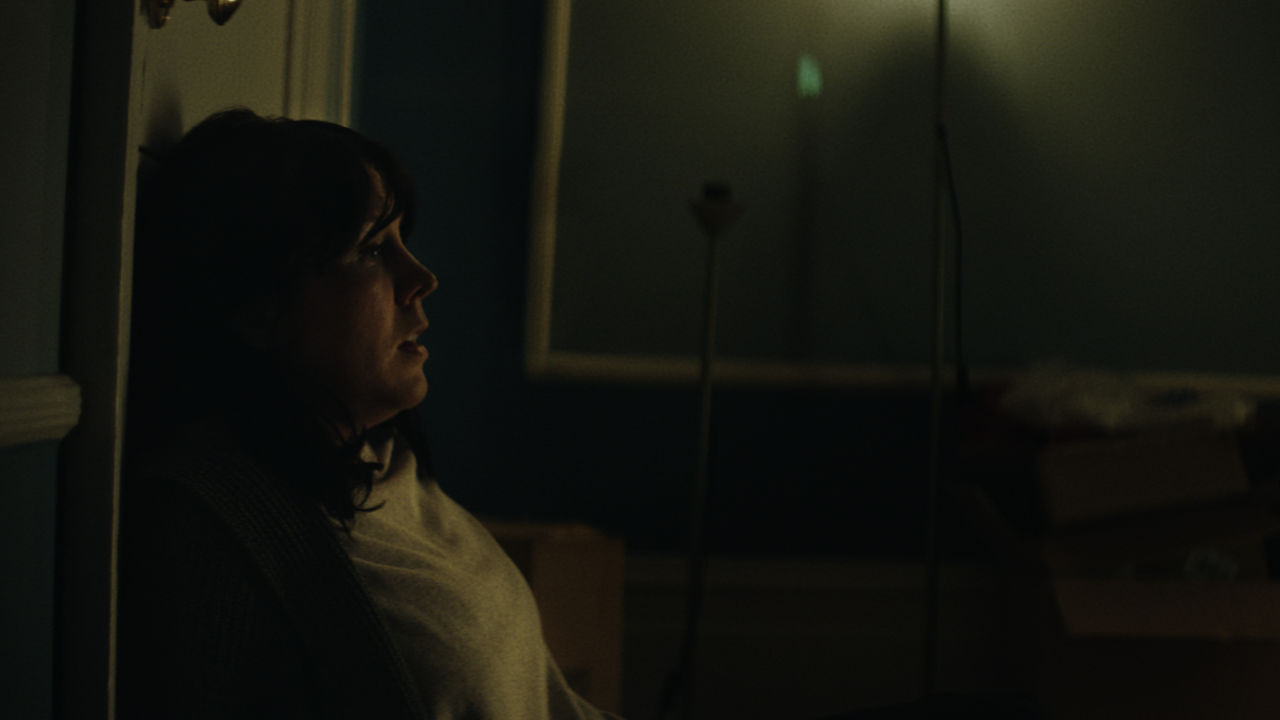
When did Alice Lowe get on board? What made you aim for her in the role?
We were so thrilled to have Alice on board and her involvement elevated the project and made everyone step up their game. Since our runtime was set at two minutes, we knew that we needed someone who the audience would immediately latch onto and empathise with – Alice has that quality in spades. After Sightseers, Garth Marenghi and Prevenge, Alice is horror royalty, which makes seeing her battle against a hell-sent Demon all the more entertaining, bringing an extra dimension to a thinly written character.
Alice is horror royalty, which makes seeing her battle against a hell-sent Demon all the more entertaining.
I’d been a huge fan of Alice’s for years and we immediately knew she’d be great for the film – we’d met briefly at the 2013 BIFAs, where Sightseers won big and my first feature Strings won the Discovery Award, but had no direct line to her.
We were very lucky to be working with the brilliant Casting Directors Kharmel Cochrane and Heather Basten, who helped us secure a brilliant cast on a very low budget. Their enthusiasm for the project went a long way and the cast they helped us secure – not only Alice but the wonderful Beau Gadsdon – really elevated the material.

Bove: Alice Lowe and Beau Gadsdon on set.
How long was the shoot? Despite its duration, it seems pretty complex! Were there any issues?
We shot for four days, getting roughly 30 seconds of material each day. Even though we were shooting so little, the days were full as each shot had to be executed perfectly and fit exactly into our two minute runtime - if the shot was good but went on too long or too short, we’d have to keep re-taking until we’d perfected the timing. The film features around 70 individual shots, so even with the luxury of time we were stretched.
We were working on a very low budget, but everyone was aiming for a Hollywood standard final product.
We were working on a very low budget, but everyone was aiming for a Hollywood standard final product, and so we wanted to ensure that the make up, VFX and stunts were all seamless. We had two amazing stunt performers, led by our brilliant stunt coordinator Nathaniel Marten - who ensured that our stunts were safe but had the brutal, wince-inducing quality we were after.
These stunts, along with the full body makeup on the demon, took a lot of time to realise, but ultimately ended up elevating the film.
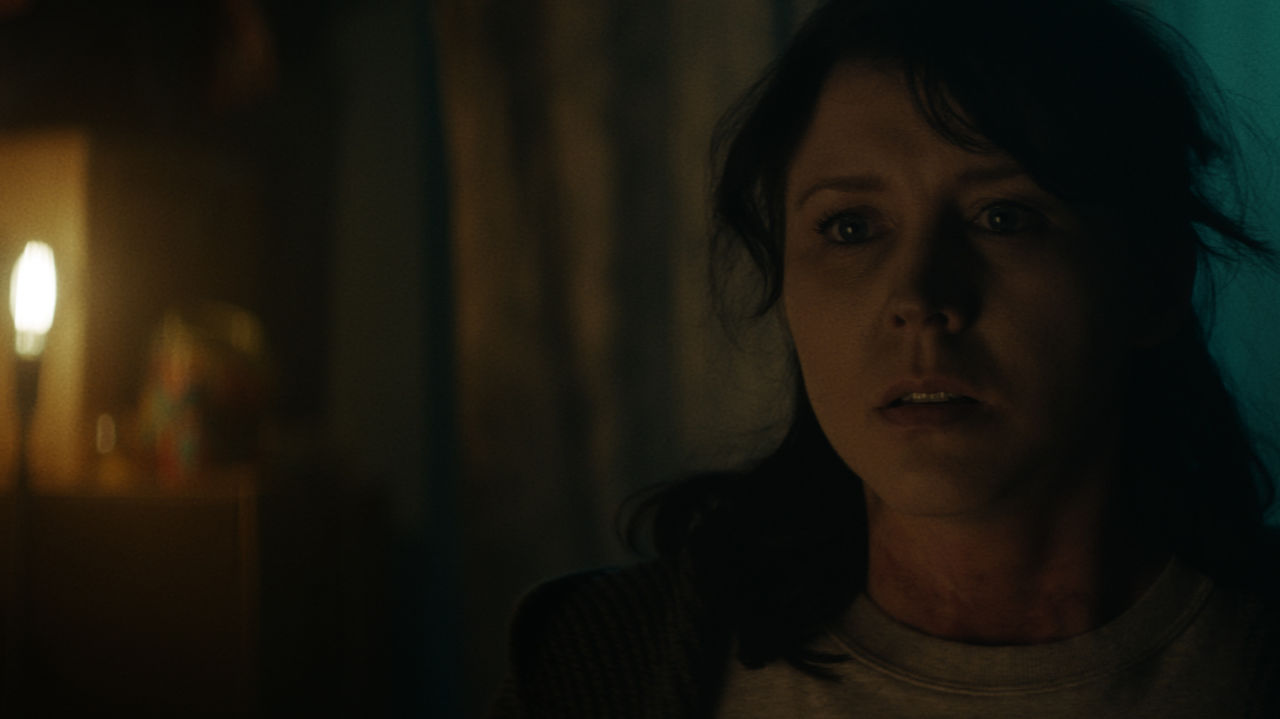
The demon terrorising the mother and daughter is terrifyingly well realised. How did you get to that look? Who were the VFX geniuses behind it?
The creature came from the fucked up mind of Dan Martin, SFX designer for Ben Wheatley, Peter Strickland and Harmony Korine among others. I’d worked with him before and his skill and imagination are unrivalled in the UK. I gave him a brief, but my ideas were more to do with the feral, unstoppable quality of the creature’s movement and posture – the design of the face is all Dan. He’s probably the busiest SFX designer in the country, but if something sparks his imagination, he’ll throw himself into the project and always deliver something cool – even on an extremely low budget, such as ours.
He’s so scary in moments I totally forget that there is a performer underneath all the effects work.
Our intention was to shoot the majority of the creature as a practical effect, with a performer in costume, and then enhance elements of the creature in VFX. The creature VFX was handled by the brilliant post house Absolute, who pulled a week of late nights to complete the film on schedule. I can’t overstate their contribution to this film, the artists who worked on the film are just that – artists. They put so much care into the movie, taking pride in every detail and nuance.
Credit should also go to James Swanton, who gives an incredible, unsung performance as the creature. He worked on the movement of the creature and would send me iPhone videos of himself pretending to be a rabid creature in his front room, crawling and spasming over household furniture. He’s so scary in moments I totally forget that there is a performer underneath all the effects work.
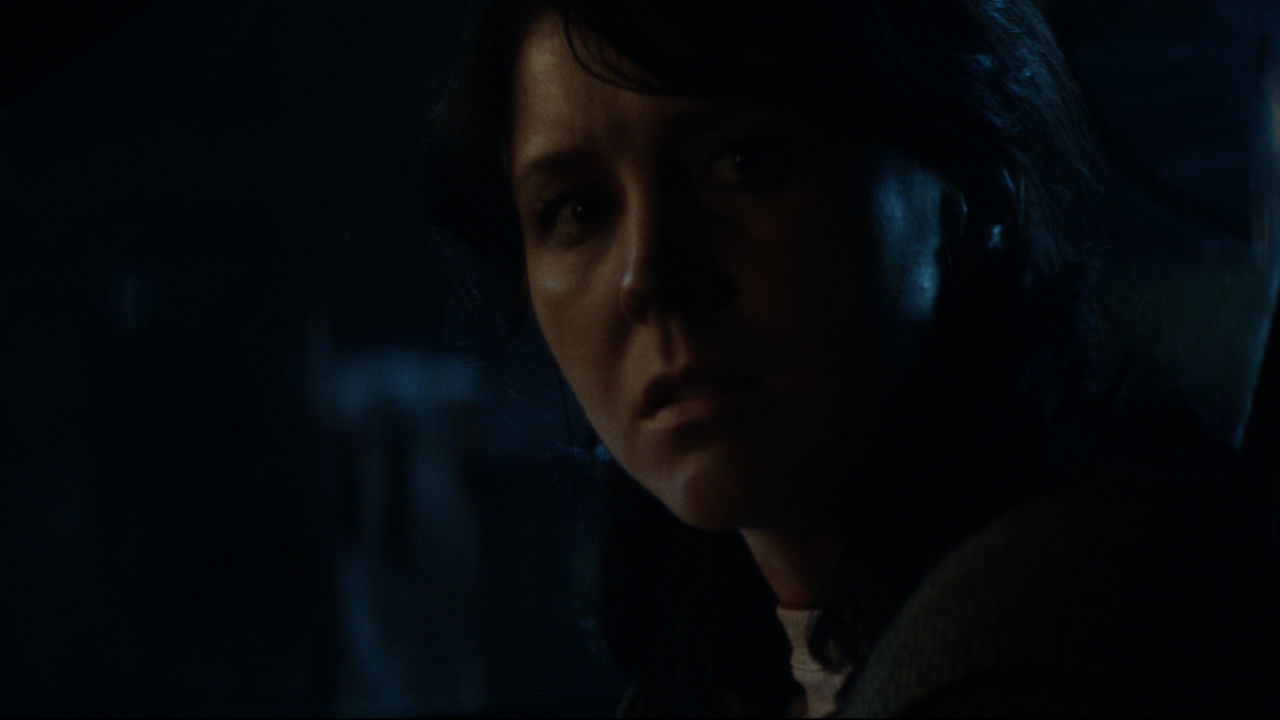
We hear a previous short of yours - Dawn Of The Deaf - is being reworked into a feature. Would you like the same for Salt? The cliffhanger ending left us gasping for more.
We’d love to expand Salt into a longer piece. There’s definitely a lot of cool directions the idea could take were we to expand it, but when we were writing and shooting, our only aim was to keep the action unrelenting and to never let the audience get a step ahead of the action.
We want to be making big budget Hollywood horror movies for cinema audiences
Since then, we’ve come up with a very exciting idea of how to expand the world of Salt, but our ambitions go even further - we want to be making big budget Hollywood horror movies for cinema audiences, and Salt is our mini pitch. Whether it is the Salt feature, or something else, we want to step up to a bigger canvas.
What’s up next from you?
I’ve recently wrapped production on three episodes of a TV show called Britannia, a dark and bloody Roman epic for Amazon and Sky. After that I’m directing another TV show, which I can’t announce just yet but which I’m so excited for.
As mentioned, we’re also developing a Dawn of the Deaf feature film (more news of which will land soon), a gothic TV mini-series and a vampire movie called Haven, which has a brilliant, totally unique script by a writer called David Lemon that I’m hoping to shoot next year.
)
